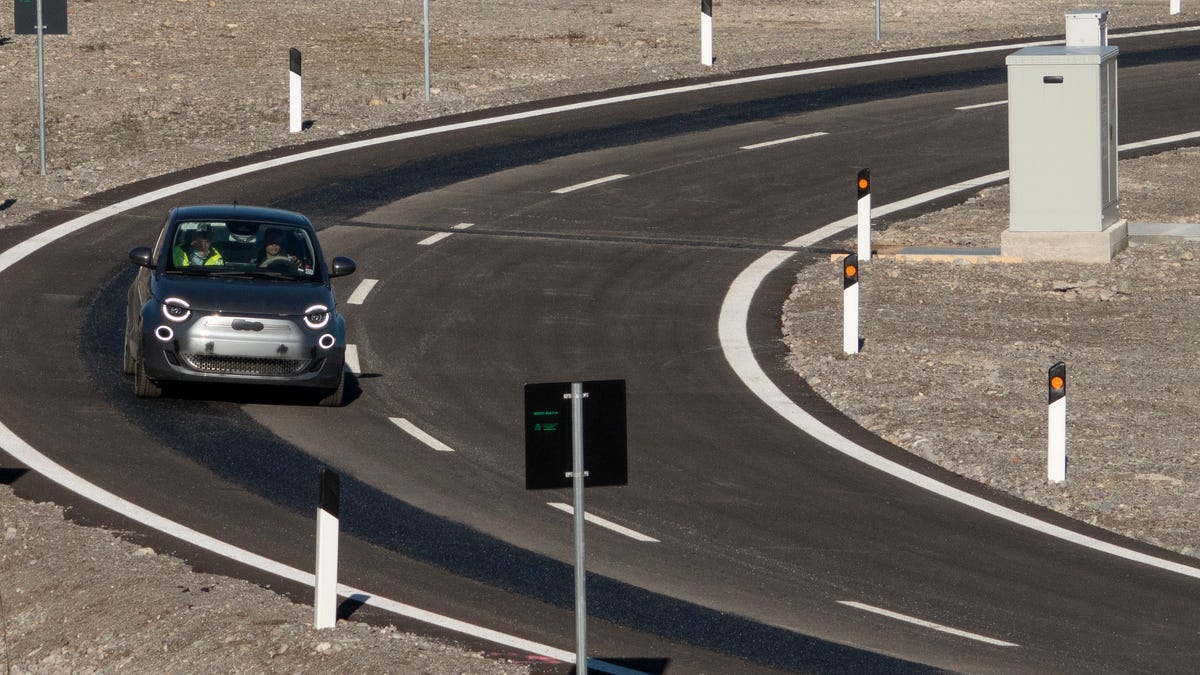This Road Wirelessly Charges Electric Cars as They Drive - 4 minutes read

As prices drop and availability increases, some of the last road blocks to mass adoption of electric vehicles is range anxiety and charging times. But a prototype test track in Italy solves both of those issues by borrowing the same technology that makes it easy to charge your smartphone without wires.
Although the earliest EVs were often recommended for shorter daily commutes or city driving because of their limited range, there are now many options promising well over 300 to 400 miles of travel before the vehicle’s batteries need a charge. But what still complicates a long road trip in an EV is that even the fastest charging stations require at least half an hour to replenish rechargeable batteries, and usually much longer than that depending on the range of the vehicle. Compare that to filling up a tank with gasoline, which takes just a couple of minutes, and it makes sense why some drivers are still hesitant to go electric.
Ranges and charging times will inevitably improve over time, but other companies are looking into completely different solutions that could eliminate charging pit stops altogether. Stellantis isn’t exactly a household name as far as car makers go, but it’s the parent company for iconic brands like Jeep, Chrysler, Dodge, Ram, and even Maserati. As with any car maker hoping to stay relevant over the next few decades, it’s investing heavily into research surrounding electric vehicles, and recently unveiled a unique new test track in Chiari, Italy, called the “Arena del Futuro” circuit (Arena of the Future) that could potentially allow EVs to run laps forever without ever needing to stop and charge.
Instead of bending the laws of physics and creating a track that’s perpetually running downhill like some impossible loop from an Escher painting, Stellantis, along with a handful of partnering companies, have embedded a series of coils just below the Arena del Futuro track’s asphalt surface as part of a system called Dynamic Wireless Power Transfer, or DWPT. It’s more or less a similar approach to the charging pad that lets you simply set your smartphone down to charge its battery without having to plug anything in, with DWPT using a long chain of coils to transfer power while a vehicle is still in motion.
The track runs on DC power, which allows it to be directly connected to renewable energy sources such as solar panel arrays or wind turbines. It also facilitates the use of thinner aluminum wires, which require less material to manufacture, are easier to recycle, and cost half as much as wiring made from materials like copper. To take advantage of the track’s power-sharing capabilities, an EV simply needs to be upgraded with a special receiver that sends the power directly to its electric motor. In testing, a Fiat New 500 was able to maintain highway speeds while circling the track without having to use any of the power stored in its batteries.
The system is completely safe to everyone inside an electric vehicle driving over it, and even safe to pedestrians crossing a road with the coils installed. There are some challenges to this approach, however. The system provides enough power to keep a Fiat New 500 running, but that’s a relatively small vehicle with a minimal payload. Larger vehicles like buses or transport trucks may need to rely on multiple receivers, but that also raises the question of how many vehicles can share the road while still drawing enough power to keep motors running. Would a heavy traffic jam force vehicles to start drawing power from their batteries to keep running?
The power coils also occupy just a thin strip of the road, and proper alignment of the coils and the vehicle’s receiver are crucial to efficient power transfer. But the advent of autonomous vehicle technologies could be a solution to that problem. The biggest issue facing widespread adoption of the DWPT system is the work needed to upgrade roads across the country with the coils. It doesn’t require roads to be completely torn up: a small groove for the coils is cut and filled back in afterwards, but it still represents a massive infrastructure project. Given the country’s resistance to simply ensuring bridges are safe to drive on, it might be a hard sell on this side of the pond.
Source: Gizmodo.com
Powered by NewsAPI.org